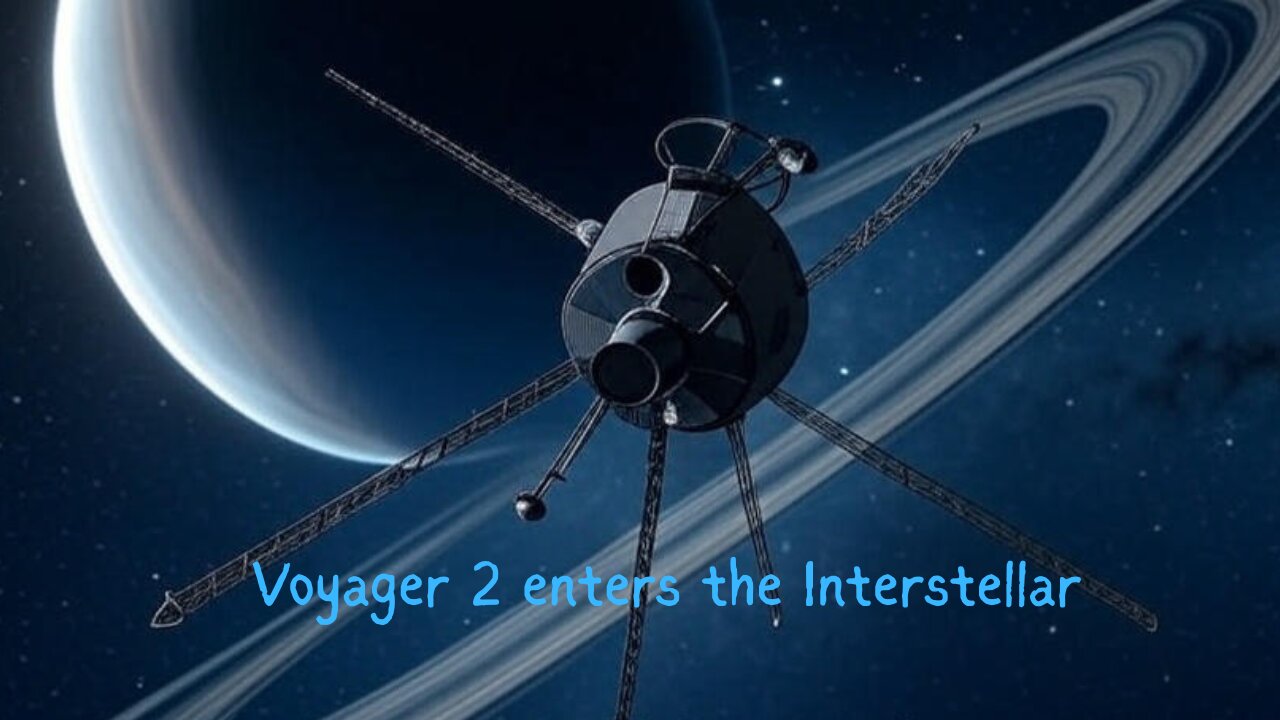Premium Only Content

Voyager 2’s Epic Journey: 48 Years Beyond the Stars (1977–2025)
In the summer of 1977, a small spacecraft named Voyager 2 hummed to life at Cape Canaveral. Launched on August 20, it was a marvel of human ingenuity, a golden record aboard carrying Earth's songs, greetings, and dreams. Its mission: to explore the outer planets and, if fate allowed, to whisper humanity’s story to the stars.
Voyager 2 danced past Jupiter in 1979, its cameras capturing swirling storms and volcanic moons. Io’s eruptions stunned scientists; Europa’s icy crust hinted at hidden oceans. The craft’s heart—a plutonium-powered generator—beat steadily, sending data across billions of miles. Saturn’s rings came next in 1981, a cosmic ballet of ice and dust, revealing new moons and gaps like notes in a celestial symphony.
Then came Uranus in 1986, a pale blue giant shrouded in mystery. Voyager 2 unveiled its faint rings and a family of moons, each a world unto itself. Neptune followed in 1989, its deep azure and raging storms a final planetary portrait. The spacecraft’s flyby of Triton revealed geysers spewing nitrogen, a frozen world alive with secrets.
With its planetary tour complete, Voyager 2 sailed into the unknown. By 2018, it crossed the heliopause, entering interstellar space—a lone emissary in the galaxy’s vastness. Its signals grew faint, yet it persisted, powered by dwindling energy. In 2025, as Earth celebrated its 48th year aloft, Voyager 2 sent a whisper from 12 billion miles away, a reminder of humanity’s audacity.
Scientists listened, awed, as the craft’s golden record—carrying voices, music, and hopes—drifted toward unknown listeners. Voyager 2, now a silent wanderer, carried on, a testament to the dream of reaching beyond.
-
 0:50
0:50
Nature Stars and Planets
1 month agoCozy Bird Haven: A Home & Feast for Feathered Friends
70 -
 LIVE
LIVE
Cewpins
1 hour agoSunday Sesh!🔥Rumble Giveaway Tonight!🍃420💨!MJ !giveaway
141 watching -
 LIVE
LIVE
Conductor_Jackson
2 hours agoLet’s Play BioShock Infinite Burial at Sea Episode 2!
37 watching -
 LIVE
LIVE
EricJohnPizzaArtist
6 days agoAwesome Sauce PIZZA ART LIVE Ep. #63: Charlie Sheen
138 watching -
 LIVE
LIVE
THOUGHTCAST With Jeff D.
29 minutes agoTHOUGHTCAST Jeff and Keegan play Left 4 Dead 2. Classic games
35 watching -
 2:43:09
2:43:09
putther
5 hours ago $4.80 earned⭐ GTA ONLINE BOUNTIES THEN GTA IV ❗
44.2K6 -
 6:31:38
6:31:38
GritsGG
7 hours agoQuad Win Streaks!🫡 Most Wins in WORLD! 3600+
52.4K1 -
 1:20:13
1:20:13
Sports Wars
13 hours agoCollege Football UPSETS, MLB Playoff Drama, NFL Week 4
98.3K15 -
 LIVE
LIVE
Spartan
4 hours agoOMiT Spartan | Watching TSM 5K with chat + Black Myth Wukong + Ranked on Infinite Maybe
75 watching -
![🔴[LIVE] Sept RCP #27💜 [English Chat] 😍DGG-a-Thon! Forever Skies maybe other game later ....💜](https://1a-1791.com/video/fwe2/ee/s8/1/0/t/e/m/0temz.0kob-small-LIVE-Sept-RCP-27-English-Ch.jpg) LIVE
LIVE
Deaf Gamer Girl
4 hours ago🔴[LIVE] Sept RCP #27💜 [English Chat] 😍DGG-a-Thon! Forever Skies maybe other game later ....💜
2 watching